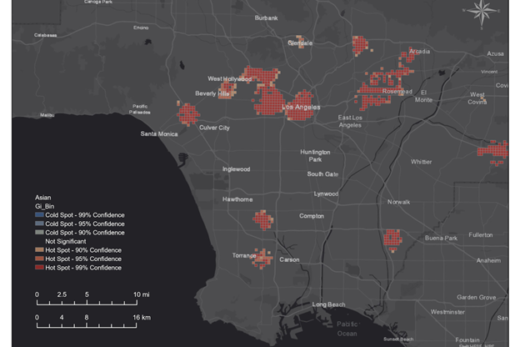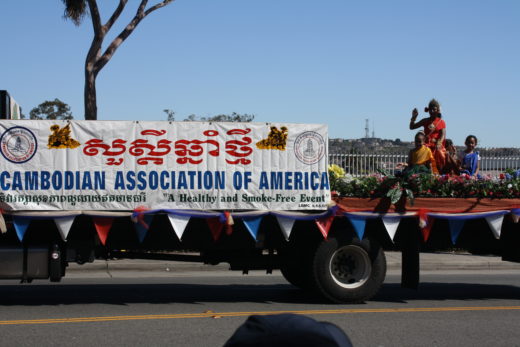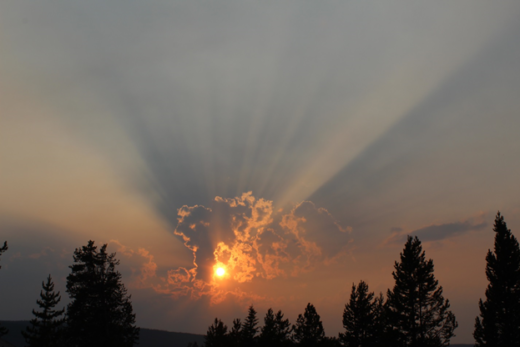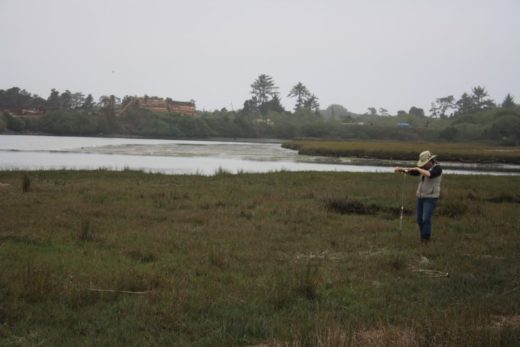A few decades ago, demographic data began to reveal how California was becoming the most culturally diverse state and Los Angeles the most culturally diverse metropolitan area in the history of the world. Before you dismiss these as overstatements, examine the statistics; we highlight these facts especially in Chapters 7 and 8 of our publication, Rediscovering the Golden State: California Geography. It’s the largest and most diverse city within this state that now has no majority ethnic group. No other place on Earth has assembled more people affiliated with such a large assortment of ethnic groups, languages, and cultures. Throwing these people together is a cultural experiment of monumental proportions.

Today’s L.A., Tomorrow’s World?
As developing communication and transportation technologies continue to dissolve global borders (at least in the long term), we know that such interaction and diversity foretells humanity’s future; today’s L.A. represents a glimpse into that future. So, does California’s and L.A.’s cultural experiment represent a beacon of light, a warning sign, or something between those extremes as we imagine humanity’s future on this planet?

Tasting the World in a Day
More than 20 years ago, we started a project that would help shed light on how L.A.’s people and landscapes are reflections of our world, how the world is being changed by L.A., and how this great experiment is progressing. We repeatedly bused up to 50 people through L.A., stopping to survey specific neighborhoods and cultures. Nearly two decades ago, scholar Lisa Harrison designed our first guidebook by piecing together the stacks of articles and research projects we used to inform us about each location. Here is the expanded, refined, and updated 2020 version. This was and continues to be our attempt to experience, examine, and better understand as many different cultures, neighborhoods, and landscapes as possible in one L.A. day. Call it what you want; we call it See the World in a Different Way: Eat Your Way through L.A.

Reexamining Cultures within Landscapes of Reality and Vice Versa
This cultural tour includes a lot of history, but has been updated to just before the 2020 COVID-19 pandemic. It is intended to unveil the genuine working parts of L.A., the rich cultures and ethnic foods championed by its people, and the sometimes hidden stories about these cultures and neighborhoods that are too often overlooked in the media. Throughout the years, our theme has been reworked and recast by local food critics and cultural researchers from many disciplines with somewhat different perspectives and spins, while others have even used our title, all recognizing and celebrating these unparalleled opportunities to learn about different people, cultures, neighborhoods, and cuisines. During 2020, we watched as the COVID-19 pandemic, social upheavals, and the resulting wildly erratic economic environments closed some of the businesses we visited here and began rearranging these urban landscapes in surprising (and often heartbreaking) ways that offer new learning opportunities.

Historic Diversity Spreads Outward
To say that L.A. has grown to become the planet’s most diverse metropolitan area is now an over-simplistic understatement. This is why we don’t have the room in this guide or the time in one day to visit all the cultures and neighborhoods that combine to make this complex conurbation. For instance, we will miss the largest concentration of Vietnamese people outside Asia in Little Saigon, Orange County. We will miss the largest concentration of Cambodian people outside Asia in Cambodia Town, Long Beach and the too-distant, but renowned “Little India” business district along Pioneer Blvd in Artesia. We will also miss the largest concentration of Chinese people in North America (now in the San Gabriel Valley). And we don’t have time to visit the largest concentration of Armenians outside Armenia, centered in Glendale. And did you know there are more Pacific Islanders in L.A. County (especially concentrated in South Bay cities) than anywhere beyond the islands? Many of these cultures and their neighborhoods (such as Leimert Park, the epicenter of African American culture in L.A.) have been the focus of separate stories on our web site, but they are just outside the boundaries of this route.

Anchored Ethnic Enclaves
Cultural geographers and anthropologists have sometimes debated whether some of these neighborhoods might be considered ghettos, ethnic enclaves, or a little of both. You might be challenged to make your own assessments in each case, knowing that an ethnic enclave is usually a neighborhood populated by people who voluntarily surround themselves with those who share similar and familiar cultures, all living within their personal comfort zones. In contrast, outside forces (such as discrimination and lack of economic opportunities) tend to enclose people into ghettos, where they are forced to live in poverty. As one example of an enclave, Southern California and specifically L.A. is also home to the largest Persian population outside of Iran. Concentrated on the West Side, you will notice their footprints (representing diverse religions and cultures) especially along Westwood Blvd in Westwood. Just as other ethnic and cultural groups have adopted local nicknames, many Iranians have even used the terms Irangeles or Tehrangeles or Irangelinos to reaffirm their connections to L.A. Many of these neighborhoods are just a little too far away from our one-day driving, walking, and dining trail, but they and many others have at least earned a shout out and a separate visit.

Concentrations of the Largest and the Oldest
Fortunately, we do have time to visit neighborhoods that have been home to the largest single concentrations of Koreans, Central Americans, and Mexicans beyond their original homelands, the first official African town in the state, L.A.’s oldest Little Tokyo, Chinatown, Greek, and Jewish districts, and a wealth of intermixing cultures along the way. Join us on this more “compact” journey by vehicle and on foot that should take at least a full day, including your sampling of ethnic foods. Though our complete one-day tour is designed for quick stops, you could easily consume an entire day surveying and experiencing each of these neighborhoods and business districts. Look over our guide before you decide.

Discovering and Experiencing Change
The COVID-19 pandemic and social upheavals that cast economic chaos across California in 2020 did more than break hearts and kill dreams in these neighborhoods. They left new opportunities to do fresh research and make new discoveries about who and what has disappeared or survived in a brutal sink or swim economy and landscape that rewards resilience and punishes those lacking the financial cushions to weather such storms. Note the changes since we updated our tour (just before 2020). Can you sense a greater disparity between the haves and have nots, or has the collapse of long-established landmarks opened doors to new residents and entrepreneurs with fresh perspectives?

Let’s Get Started with Caution and our Curiosity
You are warned not to try the tour from about 3-7 pm on weekdays as you will be overcome by L.A.’s notorious traffic monster, though that inconvenience has become a possibility almost any time. You can try public transit, since many of the stops are along corridors, but this may become a complicated and frustrating experience in such a sprawling city with a transportation system mainly designed to get people to work or school or specific events. And finally, the directions here are subject to obvious changes caused by construction, redirection of traffic flows, and your own instincts about how to stay safe and avoid trouble and delays. Use your best instincts to find parking; some stops are more challenging than others, so read all parking signs carefully. Put on your walking shoes, your seat belt, and bring your curiosity and appetite to explore the cultures and cuisines of L.A. and our world as these landscapes speak to us. Simply click through the 25 pages in their proper order as we guide you through the tour.






